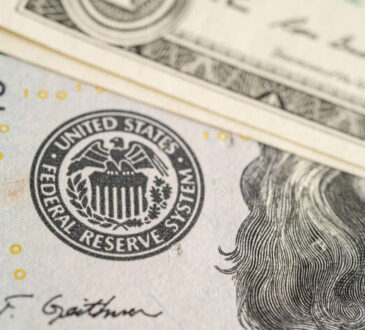
Mixed US Data Pushes XAU/USD Higher, but the Momentum has Been Weakening
The price of (XAU) has been holding above 2,020 for several days now.
The main factors pushing gold higher this week are the weakening US dollar and increasing demand for safe-haven assets. Yesterday’s preliminary data on February’s US Purchasing Managers’ Indices showed that business activity is growing slower than expected. However, a decrease in unemployment claims supported the , offsetting the effect of weak PMI. Considering the data, the Federal Reserve (Fed) may delay its interest rate cut.
Fed Chairman Christopher Waller said on Thursday that:
“The Fed wants to make sure there are no barriers to lowering interest rates. He added that the regulator will postpone the decision on the rate change for at least a couple of months.”
‘There’s a decent amount of physical buying, especially from the central banks, and the fact that the US dollar has not really moved is also giving gold an element of support,’ Marex analyst Edward Meir said. Also, geopolitical uncertainty and continuing tensions in the Middle East support the gold price, reinforcing safe-haven flows in XAU/USD.
XAU/USD has been moving since Tuesday within the range of 2,020–2,032. Today, the price has decreased towards the lower range bound and will likely fall below 2,020. If tensions in the Middle East subside slightly, we can expect the price of gold to return towards 2,000 next week.
Disappointing Eurozone PMI Data Slowed the Rally in EUR/USD
The euro (EUR) experienced extra volatility on Thursday due to the release of German and US Purchasing Managers’ Indices (PMI) reports
The pair rose above 1.08800 yesterday, influenced by the weakening US dollar. NVIDIA’s earnings report exceeded expectations, enhancing the tech sector and improving risk appetite. ‘The Nvidia (NASDAQ:) effect has ripped through global equity markets and given fresh wind to markets that were looking ominously poised for a 3–5% drawdown,’ stated Chris Weston, the head of research at Pepperstone in Melbourne. However, the EUR/USD rally slowed after the eurozone economic data came out lower than expected. The Hamburg Commercial Bank published the February flash PMIs, which showed a slowdown in the contraction of the Eurozone’s business activity. The region saw its mildest decline in 8 months, with preliminary PMI data suggesting stabilization in services, partially offsetting the ongoing steep drop in manufacturing output. However, the market expected the PMI to be better than the actual results, so the report disappointed investors.
The stabilized around 104 after dropping towards 103.4 following Fed Governor Christopher Waller’s suggestion that the Fed might delay interest rate cuts for longer than anticipated. The preliminary S&P Global PMI report revealed a slowdown in US private sector activity in February: the services sector grew less than anticipated while manufacturing output recovered. Additionally, initial jobless claims dropped unexpectedly last week. These factors put downward pressure on the euro.
EUR/USD remained relatively flat during the Asian and early European trading sessions. Today, traders should focus on an event that could impact the EUR/USD exchange rate. Germany will publish its Ifo Business Climate report at 09:00 a.m. UTC. The report will offer insights into how businesses view the country’s current and future economic conditions. If the figures are higher than expected, EUR/USD might rise to 1.08400. Conversely, the euro could weaken if the figures are lower than the forecast.
The Japanese Yen has Dropped by Over 6% Since the Beginning of the Year
The Japanese yen (JPY) has weakened, dropping towards 150 against the US dollar, staying near its lowest point in more than 3 months.
The Japanese yen is under pressure as investors borrow the Japanese yen to fund investments in higher-yielding assets denominated in other currencies. The Japanese yen declined further due to poor economic data from Japan, revealing the economy was in a technical recession in Q4. Additionally, the Japanese economy faced its largest contraction in manufacturing activity in more than 3 years in February, with a deceleration in the expansion of the services sector.
Thus, the currency is reaching levels that raise concerns about potential intervention by authorities in the currency markets. Last week, Japanese Finance Minister Shunichi Suzuki warned that authorities are closely monitoring the market. At the same time, Vice Finance Minister for International Affairs Masato Kanda declared that Japan would take necessary actions if needed, as the significant decline in the currency harms the economy. Interventions by the authorities may strengthen the yen.
In the Asian trading window, declined but started to increase in the early hours of the European trading session. However, currency movements were minimal due to a public holiday in Japan. The yen is considered the poorest-performing currency among G10 currencies this year, depreciating by 6.3% against the US dollar. Investors can generate interest by borrowing JPY at approximately 0% and investing in other income-producing assets in other currencies. This fact exerts downward pressure on the currency and pushes USD/JPY higher.



